|
|
|
| <<
Mar 07| HISTORY “4” “2”DAY
|Mar 09 >> Events, deaths, births, of MAR 08 [For Mar 08 Julian go to Gregorian date: 1583~1699: Mar 18 — 1700s: Mar 19 — 1800s: Mar 20 — 1900~2099: Mar 21] |
 On
a March 08: On
a March 08: 2002 Astronomer Ivan Baldry and his collaborators at Johns Hopkins University say that the average light from the universe is not turquoise [< square at left], as they had announced earlier in the year, but beige [as in background to this text]. They had amassed detailed light measurements from more than 200'000 galaxies and had been misled by using a piece of free software they had downloaded off the Web. It used an unusual representation for white. |
| 2002 Bishop resigns in sex scandal. Anthony J. O'Connell, 63, Catholic bishop of Palm Beach, Florida, resigns, admitting to the allegations leveled by Christopher Dixon, 40, his former student at St. Thomas Aquinas minor Seminary in Hannibal, Missouri. O'Connell was the rector there from the late 60s to 1988. Dixon, now 40, said the two touched inappropriately in bed after he sought out O'Connell for counseling, and that the abuse began when he was in the ninth grade and continued through the 12th grade. O'Connell said that there he might have been involved in a similar way with one other person in those years. In fact, a number of former seminarians allege that Father O'Connell, the highly respected rector of the seminary, would not only ignore complaints of sexual abuse by other priests at the seminary, but would turn monthly private spiritual-counseling sessions into mostly psychotherapy about sex, urging the seminarian to verbalize his sexual fantasies, engage in simultaneous masturbation in the chapel, saying that “there is no sin in accepting your body for what it is,” grope and fondle the seminarian, disrobe him, and take him to bed, both naked. One anonymous plaintiffs maintains that for several years after becoming a bishop, O'Connell continued to arrange sexual encounters with him. They also say that O'Connell tried to dissuade them from taking legal action, making secret payments in some cases. The nation's latest and biggest sex-abuse scandal involving priests began in the Archdiocese of Boston, where Cardinal Bernard Law admitted that a former priest molested children for years but was shuttled from parish to parish anyway. More than 130 people have come forward to say the defrocked priest, John Geoghan, abused them. Since January 2002 dozens of Catholic priests out of more than 47'000 nationwide have been suspended or forced to resign, and priests' names have been turned over to prosecutors. O'Connell, who has been a priest for 38 years, was bishop of Knoxville, Tennessee, since 1988, before coming to Palm Beach in 1999. He succeeded J. Keith Symons, the first US bishop to resign because of sexual involvement with boys. O'Connell's admission came only hours after Florida's bishops issued a statement calling sexual abuse “both criminal and sinful”. The Jefferson City, Missouri., diocese paid Dixon $125'000 in a 1996 settlement, and he promised not to pursue further claims against the diocese, O'Connell and two other priests, Rev. Manus Daly, who allegedly abused Dixon at the seminary, and the Rev. John Fischer, who allegedly began abusing Dixon at a Catholic school when he was 11. Daly was removed from a Marceline, Missouli, church this week and Fischer was removed from the priesthood in 1993 after allegations involving other children. Dixon himself was a priest for five years before he was diagnosed with depression in 1995. He said the depression came after he was assigned to work at the Hannibal seminary under Daly. He later left the priesthood. O'Connell is not the highest-ranking clergyman felled by a sex scandal. In 1993, Archbishop Robert Sanchez of Santa Fe, N.M., resigned over his involvement with several women, some of them teen-agers. Archbishop Eugene Marino of Atlanta and Bishop G. Patrick Ziemann of Santa Rosa, Calif., resigned after sex scandals involving adults. The late Cardinal Joseph Bernardin in Chicago was accused of abuse in a 1993 lawsuit, but the accuser later recanted. It should be noted that while the abuses uncovered are atrocious and intolerable, priests are being disciplined even on mere accusations to which they have not admitted. The lesson ought to be learned from the witch-hunt of childcare providers some years ago, where the disgusting crimes alleged led to the convictions of several persons later proved to be innocent. |
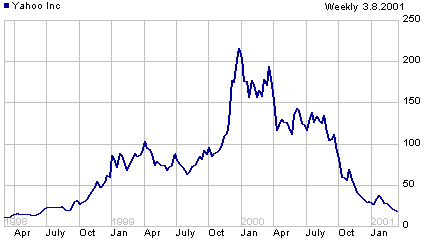 2001
After Yahoo announces lower than expected results for the first quarter
and the coming resignation of its chief executive Tim Koogle, Yahoo stock
(YHOO on NASDAQ) loses $3.25 to close at $17.69. On a split adjusted basis,
it had traded as high as high as $237.50 on 03 January 2000, and as low
as $1.32 on 22 September 1996. [3-year graph >] 2001
After Yahoo announces lower than expected results for the first quarter
and the coming resignation of its chief executive Tim Koogle, Yahoo stock
(YHOO on NASDAQ) loses $3.25 to close at $17.69. On a split adjusted basis,
it had traded as high as high as $237.50 on 03 January 2000, and as low
as $1.32 on 22 September 1996. [3-year graph >]2001 At 21:44 UT, The US Census Bureau's population estimates are US 283'752'400 World 6'133'250'401. 2001 La Sala Primera de la Corte de Apelaciones de Santiago de Chile confirma el procesamiento contra el ex dictador Augusto José Ramón Pinochet Ugarte. 2000 Today, on International Women's Day, Israel's Transportation Minister and Center Party leader Yitzhak Mordechai is being accused of a history of sexual abuse of women. Yesterday he had announced that he was going on leave, after a woman on his staff complained to the police that he had sexually harassed her. (000308 Jerusalem Post) 2000 US President Clinton submits to Congress legislation to establish permanent normal trade relations with China. 1999 En uno de los peores momento de la crisis económica que ha sufrido Ecuador en los últimos 50 años, el gobierno decide cerrar todos los bancos para controlar la acelerada subida que el dólar experimenta y así evitar la especulación ante las medidas económicas de urgencia que pretendía implementar. 1999 The Clinton administration directed the firing of nuclear scientist Wen Ho Lee, 59, from his job at the Los Alamos National Laboratory because of mostly unfounded allegations of security violations (or rather, it is suspected, because he is an ethnic Chinese). They persecuted him mercilessly, holding him in chains in solitary confinement for nine months (10 Dec 1999 – 13 Sep 2000) until, in desperation, he pled guilty to one minor charge, while the US Justice (a misnomer) Department dropped 58 others. Later Lee would present his case in a book: My Country Versus Me: The First-Hand Account by the Los Alamos Scientist Who Was Falsely Accused 1998 Con motivo del Día Internacional de la Mujer Trabajadora, coincidente este año con el cincuentenario de la Declaración Universal de los Derechos Humanos, las mujeres de casi todos los países salen a la calle para dar a conocer ante la sociedad los problemas que sufren. 1998 Más de 20,7 millones de colombianos acuden a las urnas para elegir a 102 senadores y 161 representantes a la Cámara, en medio de una ofensiva guerrillera que causó al menos 200 muertos en la semana previa a los comicios. La victoria es para el presidente colombiano, Ernesto Samper Pizano, que obtiene una cómoda mayoría en el Senado. 1996 Major sell-off on Wall Street, resulting from a drop in the US's unemployment rate and the biggest jobs gain in more than a decade, and therefore expectations of no more interest rate cuts. |
1996 Dr. Jack Kevorkian is acquitted of assisted suicide
for helping two suffering patients kill themselves.
|
| 1979 Volcanoes on Io discovered by Voyager 1 1976 1774 kg (largest observed) stony meteorite falls in Jilin, China
|
1963 Syrian Arab Republic Revolution Day.
1946 Des troupes françaises débarquent à Haiphong et reprennent pied à Hanoi et au Tonkin sous le commandement du général Leclerc et du commissaire Jean Sainteny. 1942 Japanese forces capture Rangoon, Burma.
1934 Edwin Hubble photo shows as many galaxies as Milky Way has stars 1930 Mahatma Gandhi starts civil disobedience in India 1922 En España, cae el gobierno Maura-Cambó, que es sustituído por el de José Sánchez Guerra. |
| 1917
Russia's February Revolution begins (on 23 February Julian
= 08 March Gregorian) ^top^ In Russia, the February Revolution (known as such because of Russia’s use of the Old Style Julian calendar) begins. Thousands of women textile workers in Petrograd shut down their factories, partly in commemoration of International Women's Day but mainly to protest bread shortages, thus adding to the already large number of men and women on strike. Strikers march through the streets shouting "Give us bread" (Daite khleb and Khleba, khleba). Crowds head toward the city center. Demonstrators -- who were in a nasty mood -- break store windows, halt street-cars, and force other workers to join them. During the next two days, encouraged by hundreds of experienced rank-and-file socialist activists, workers in factories and shops throughout the capital would go on strike. The army garrison at Petrograd would soon refuse to suppress striking workers and would defects to the cause of the socialist revolutionaries. One week later, the Petrograd insurgents have taken over the capital and Czar Nicholas II is forced to abdicate. A provisional government composed mainly of moderates is established, and the Soviet--a coalition of workers’ and soldiers’ committees--calls for an end to violent revolutionary activity. Meanwhile, Vladimir Lenin, leader of the Bolshevik revolutionary party, leaves his exile in Switzerland and crosses German enemy lines to arrive at Petrograd on 16 April, 1917. The Bolshevik Party, founded in 1903, was a militant group of professional revolutionaries who sought to overthrow the czarist government of Russia and set up a Marxist government in its place. On 06 November 1917, the Bolsheviks seize control of the Russian state in the October Revolution, and Lenin becomes virtual dictator of the country. However, civil war and foreign intervention delay complete Bolshevik control of Russian until 1920. Lenin’s Soviet government nationalizes industry and distributes land, and on 30 December 1922, the Union of Soviet Socialist Republics (USSR) is established. In the USSR, the Communist Party controls all levels of government, and the Party’s politburo, with its increasingly powerful general secretary, effectively rules the country. Soviet industry is owned and managed by the state, and agricultural land is divided into state-run collective farms. In the decades after its establishment, the Russian-dominated Soviet Union grows into one of the world’s most powerful and influential states, and eventually encompasses fifteen republics--Russia, the Ukraine, Georgia, Belarus, Uzbekistan, Armenia, Azerbaijan, Kazakhstan, Kyrgyzstan, Moldova, Turkmenistan, Tajikistan, Latvia, Lithuania, and Estonia. La Révolution de Février en Russie Un grand nombre de travailleurs défilent paisiblement à Petrograd, la capitale de l'empire russe, à l'occasion de la journée internationale des femmes. Cette manifestation pacifique marque le début de la Révolution dite de Février. Elle est ainsi dénommée parce que ce jour-là correspond au 23 Feb dans le calendrier julien qui restera en vigueur en Russie jusqu'en 1918. Les difficultés d'approvisionnement liées au froid poussent un nombre croissant d'ouvriers à faire grève et à se joindre au défilé. Ils réclament du pain, la paix et la république! Les manifestations se succèdent et s'amplifient les jours suivants. Le dimanche 11 mars, l'armée fait face à 200'000 manifestants. Les officiers obligent alors les soldats à "viser au coeur". On relève 40 morts. Mais le lendemain, soldats et ouvriers fraternisent. Ils créent le Soviet (ou conseil) des ouvriers et soldats de Petrograd. Emmenés par le populaire député Alexandre Kerenski, les députés socialistes de la Douma (l'assemblée nationale) se rallient au Soviet de Petrograd. Le 15 mars, dans la soirée, le tsar abdique. Au terme de ces Cinq Jours, au prix d'un nombre limité de victimes, la Révolution a vaincu. Malgré la poursuite de la guerre, la Russie va vivre dans une très grande euphorie démocratique, mais celle-ci sera minée par les agissements des bolcheviks, les partisans de Lénine. Le 29 Jun, une manifestation violente téléguidée par Lénine sert de prétexte à Kerenski pour réprimer les extrémistes qui menacent la démocratie. Lénine abandonne ses partisans et s'enfuit sous un déguisement en Finlande. Mais il finira par s'emparer du pouvoir par le coup d'Etat d'Octobre. NB: Saint-Pétersbourg (ou Sankt Petersburg)a russifié son nom en Petrograd lorsque le pays est entré en guerre contre l'Allemagne en 1914. Après la mort de Lénine, en 1924, elle changera encore son nom en Léningrad. Un référendum populaire entraînera le retour à l'ancienne appellation, Saint Petersbourg, en 1991. In Russia, the February Revolution (known as such because of Russia's use of the Julian calendar) begins when riots and strikes over the scarcity of food erupt in Petrograd. One week later, centuries of czarist rule in Russia ended with the abdication of Nicholas II, and Russia took a dramatic step closer toward communist revolution. By 1917, most Russians had lost faith in the leadership ability of the czarist regime. Government corruption was rampant, the Russian economy remained backward, and Nicholas repeatedly dissolved the Duma, the Russian parliament established after the Revolution of 1905, when it opposed his will. However, the immediate cause of the February Revolution--the first phase of the Russian Revolution of 1917--was Russia's disastrous involvement in World War I. Militarily, imperial Russia was no match for industrialized Germany, and Russian casualties were greater than those sustained by any nation in any previous war. Meanwhile, the economy was hopelessly disrupted by the costly war effort, and moderates joined Russian radical elements in calling for the overthrow of the czar. On 08 March 1917, demonstrators clamoring for bread took to the streets in the Russian capital of Petrograd (now known as St. Petersburg). Supported by 90,000 men and women on strike, the protesters clashed with police but refused to leave the streets. On 10 March, the strike spread among all of Petrograd's workers, and irate mobs of workers destroyed police stations. Several factories elected deputies to the Petrograd Soviet, or "council," of workers' committees, following the model devised during the Revolution of 1905. On 11 March, the troops of the Petrograd army garrison were called out to quell the uprising. In some encounters, regiments opened fire, killing demonstrators, but the protesters kept to the streets, and the troops began to waver. That day, Nicholas again dissolved the Duma. On 12 March, the revolution triumphed when regiment after regiment of the Petrograd garrison defected to the cause of the demonstrators. The soldiers, some 150'000 men, subsequently formed committees that elected deputies to the Petrograd Soviet. The imperial government was forced to resign, and the Duma formed a provisional government that peacefully vied with the Petrograd Soviet for control of the revolution. On 14 March, the Petrograd Soviet issued "Order No. 1," which instructed Russian soldiers and sailors to obey only those orders that did not conflict with the directives of the Soviet. The next day, 15 March, Czar Nicholas II abdicated the throne in favor of his brother Michael, whose refusal of the crown brought an end to the czarist autocracy. The new provincial government, tolerated by the Petrograd Soviet, hoped to salvage the Russian war effort while ending the food shortage and many other domestic crises. It would prove a daunting task. Meanwhile, Vladimir Lenin, leader of the Bolshevik revolutionary party, left his exile in Switzerland and crossed German enemy lines to return home and take control of the Russian Revolution. |
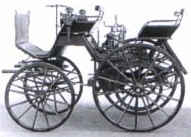 1917
US invades Cuba for 3rd time. 1917
US invades Cuba for 3rd time.1917 The US Senate voted to limit filibusters by adopting the cloture rule. 1910 En España, el Rey autoriza que las mujeres realicen estudios superiores. 1893 S'ouvre le procès du scandale de Panama qui va briser la confiance des Français dans la République et inaugurer une vague d'antisémitisme. 1888 Proclamación de Federico III como emperador de Alemania. 1886 Gottlieb Daimler orders a coach from coach makers Wilhelm Wimpff & Sohn in Stuttgart and has it equipped with a fast-running engine. It is the first four-wheeled automobile which he builds. [photo >] 1865 Battle of Kinston (Wise's Fork), North Carolina begins 1865 Union General Sherman's army group occupies Fayetteville, North Carolina 1862 Siege of New Madrid, Missouri continues 1854 US Commodore Matthew C Perry's makes his second landing in Japan. Within a month, he concluded a treaty with the Japanese. — Suite aux menaces du commodore Perry, les Japonais se résignent à signer avec les Etats-Unis le traité de Kanagawa par lequel ils consentent à ouvrir leurs ports aux navires de commerce battant pavillon américain. 1836 Decreto de Juan Alvarez Mendizábal por el que se dispone la incautación y venta de los bienes de órdenes religiosas en España. 1796 The US Supreme Court, in Hylton v. United States, rules that the carriage tax is an indirect tax, therefore constitutional. This is the first time that the Court rules on the constitutionality of legislation passed by Congress. 1795 Rappel Girondin Les modérés qui se sont affirmés imposent à l'Assemblée le retour des Girondins -- qui tiennent leur nom du fait que plusieurs de leurs chefs avaient été, dès le début de la Révolution, députés de la Gironde -- et font restituer aux familles des victimes de la Terreur tous leurs biens.
1702 Queen Anne ascends the English throne throne upon the death of King William III this same day. 1610 Felipe II, rey de España, dispone que se establezca la Inquisición en Cartagena de Indias (Colombia). 1545 Los encomenderos de Paraguay envían preso a España a Álvar Núñez Cabeza de Vaca. |
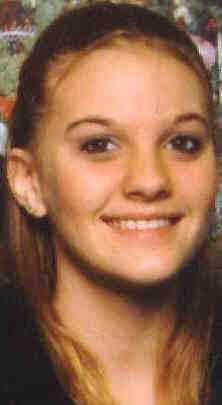 |
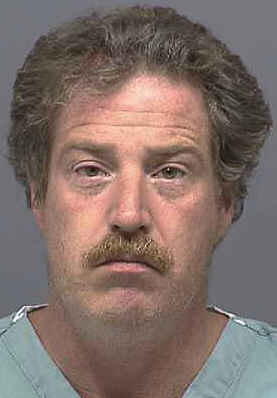 |
| 2002 Some 60 North African illegal immigrants after their small boat heading for Italy capsizes in rough weather some 100 km south of Lampedusa, Italy, early in the morning. 11 persons are rescued. Each month hundreds of illegal immigrants try to enter Europe by sailing to Italy. 2002 Edward Korol, 20, Israeli Staff Sergeant, from Ashdod, during gunbattles with armed Palestinians in the Tul Karm refugee camp. He is the only Israeli killed on this day when Israeli troops entering Palestinian areas have killed at least 42 Palestinians (some of which are listed below). 2002 Yousif Shehada, 33, Akram Ganayim, 18, Muhanad Abu Hilal, 24, Tarik Abu Jamous, 24, Husni Nayef, 28, Walid Ganim, 22, Shadi Abbas, 22, Kamal Salim, 36, (a nurse), Ibrahim Asaad, 25, (an ambulance driver), Ahmad Abu Tama, 50, Bilal Rajab, 24, Mahmoud Abbas, 20, Zeyad Aljarar, 26, Khalid Khirallah, 36, Mahmoud Fayez, 10, Palestinians killed by Israeli troops in Tul Karm, West Bank. 2002 Mosa Alnajar, Bakir Alnajar, Ashraf Alnajar, Arif Hirzallah, Reyad Alkassas, Ayman Abu Tir, Marwan Abu Motlak, Ibrahim Abu Daka, khalid Kdeeh, Husam Abu Tir, Reyad Abu Ridi, Muhammad Abu Argili, Muhammad Abu Ridi, Walid Abu Argili, Ihab Altalatini, and Ahmed Mefrej. “Abu Hamidi”, Palestinians killed by Israeli troops of the Givati battalion in “Khozaa”, near Khan Yunis. Major-General Ahmed Mefrej, Palestinian Authority National Security Commander in the southern Gaza Strip, was killed by Israeli gunfire as he was going to the village of Ahiz'a east of Khan Yunis to prevent PA security forces from taking part in the fighting. His bodyguard was also killed, and two others with him were wounded. 2002 Hani Ashour, 32, Saed Shalayel, 26, (an ambulance driver), Samir Younis, and Abid Abu Ibid, Palestinians killed by Israeli troops in the Alsodaniya area, north of Gaza. 2002 Ibrahim Alaraj, 42, Suliman Aldabas, 35, Sayed Fayez Abu Seifin, 14, and Saed Eid, 35, Palestinians killed by Israeli troops, two of them in the Aida refugee camp, one in Jenin, and one in the Dhesha refugee camp.
1999 Adolfo Vicente Perfecto Bioy Casares, de 84 años, escritor argentino (imperfecto), en una clínica de Buenos Aires. 1998 James McDougal, 57, one of the most important cooperating witnesses in the Whitewater investigation, dies in a federal medical prison in Fort Worth, Texas. 1991 One person, killed in a NYC theater showing extremely violent film New Jack City, about Harlem drug gangs. Violence erupts in movie theaters around the US, at the showing of this film. 1988 Seventeen soldiers died when two US Army helicopters from Fort Campbell, Ky., collided in midair. 1987 Manuel Viola, pintor español. 1986 Eduardo Mendoza Varela, poeta y periodista colombiano. 1985:: 96 personas, en el barrio chiíta de Beirut, al estallar un coche-bomba junto a un cine y una mezquita llena de fieles. 1985 Goodstein, mathematician.
1942 José Raul Capablanca, ajedrecista cubano. 1941 Drach, mathematician. |
| 1940
Day 100 of Winter War: USSR aggression against Finland. ^top^ More deaths due to Stalin's desire to grab Finnish territory. Finns take eastern Luelahti motti in Kuhmo Mannerheim suggests Finland consider one more time the offer of assistance by the Western Allies. Foreign Minister Tanner believes asking for assistance from the Allies could wreck the talks in Moscow. The Finnish negotiators in Moscow meet the Soviet negotiating team at 4 o'clock in the afternoon. The Soviet team comprises Molotov, Zdanov and General Vasilevski. The Finns are disappointed in their hope of getting Stalin to participate in the talks. The first session of talks begins in Moscow at 7 o'clock in the evening. To block the enemy advance, the Finnish defenders attempt to dam the waterways to the northeast of Viipuri and manage finally to flood the area. Soviet troops on the Isthmus reach the Finnish support line in Tali. The Finnish troops in Viipurinlahti bay are forced to evacuate Suonionsaari and Ravansaari islands. On the mainland, the enemy consolidates its bridgeheads in Niskapohja, Vilaniemi and Häränpääniemi. In Vuosalmi the enemy is digging in on the northern bank of the Vuoksi. The Finnish 2nd and 21st divisions are estimated to be facing six Russian divisions. They are thus outnumbered three to one. In Taipale, the Finns pull back their positions in the Terenttilä sector. In the north, the Finns take the eastern Luelahti 'motti' in Kuhmo. General Headquarters orders the evacuation of the Mantsi islands at the eastern end of Lake Ladoga. Two Soviet divisions attack across the Vuoksi from Vasikkasaari to Vuosalmi. Up in Kuhmo, the eastern Luelahti 'motti' is in Finnish hands by midday. The Soviet Union is today celebrating International Women's Day. The special "sisters of struggle" women's groups attached to the Red Army arrange numerous dance performances and other programmes in the various units of the army. Selected women soldiers are decorated for valour. In Finland, the Central Organization of Social Democratic Women urges its members to join the Lotta Svärd women's defense organization. Kuhmossa Luelahden itäinen motti kukistuu Talvisodan 100. päivä, 08.maaliskuuta.1940 ^top^ Mannerheim esittää vielä kerran harkittavaksi länsivaltojen avuntarjouksen hyväksymistä. Ulkoministeri Tannerin mielestä avunpyyntö voisi katkaista neuvottelut Moskovassa. Suomen neuvottelijat tapaavat neuvostovaltuuskunnan klo 16. Neuvostovaltuuskuntaan kuuluvat Molotov, Zdanov ja kenraali Vasilevski. Suomalaisten toive saada Stalin neuvottelupöytään ei toteudu. Ensimmäinen neuvottelu alkaa Moskovassa klo 19. Vihollisen etenemisen estämiseksi Viipurin koillispuolella yritetäänpadota vesistöjä ja Viipurin koillispuoleinen tulvitus toteutetaan. Neuvostojoukot tunkeutuvat tukilinjalle Talin kannaksella. Viipurinlahdella suomalaiset joutuvat vetäytymään Suonionsaaresta ja Ravansaaresta. Mantereella vihollinen vahvistaa sillanpääasemiaan Niskapohjassa, Vilaniemessä ja Häränpääniemessä. Vuosalmella vihollinen pureutuu Vuoksen pohjoisrannalle. Suomalaisten 2. ja 21. Divisioonia vastassa lasketaan olevan kuusi venäläistä divisioonaa. Ylivoima on siis kolminkertainen. Taipaleessa vedetään Terenttilän lohkon asemat taemmas. Kuhmossa Luelahden itäinen motti kukistuu. Päämaja käskee tyhjentämään suomalaisten hallussa olevat Mantsin saaret Laatokan itäpäässä. Kaksi neuvostodivisioonaa rynnäköi Vasikkasaaresta Vuoksen yli Vuosalmelle. Itäinen Luelahden motti Kuhmossa kukistuu puoleen päivään mennessä. Tänään vietetään Neuvostoliitossa Kansainvälistä Naistenpäivää.Puna-armeijaan perustetut "taistelun ystävättäret" -naisryhmät järjestävät lukuisia tanssiesityksiä ja muuta ohjelmaa eri joukko-osastoissa. Puna-armeija palkitsee kunniamerkeillä urhoollisia naissotilaitaan. Sosialidemokraattinen Naisjärjestö kehottaa jäsenistöään liittymään lottiin. I Kuhmo kvävs den östra mottin i Luelahti Vinterkrigets 100 dag, den 08 mars 1940 ^top^ Mannerheim föreslår att man ännu en gång borde överväga att ta emot hjälp från väststaterna. Utrikesminister Tanner anser att en begäran om bistånd skulle avbryta förhandlingarna i Moskva. De finska förhandlarna sammanträder med sovjetdelegationen kl. 16. Sovjetdelegationen består av Molotov, Zdanov och general Vasilevski. Finnarnas önskemål om att få Stalin med i förhandlingarna uppfylls inte. De första förhandlingarna börjar kl. 19 i Moskva. För att förhindra fiendens avancemang nordost om Viborg försöker man dämma vattendragen och låta vissa områden svämma över. Ryska trupper tränger ända fram till stödlinjen på Tali näs. I Viborgska viken tvingas finnarna retirera från öarna Suonionsaari och Ravansaari. På fastlandet befäster fienden sina brohuvuden i Niskapohja, Vilaniemi och Häränpäänniemi. I Vuosalmi biter sig fienden fast vid den norra stranden av Vuoksen. Man räknar att sex ryska divisioner strider mot de finska 2. och 21. Divisionerna. Övermakten är alltså trefaldig. I Taipale drar finnarna ställningen i Terenttilä-avsnittet längre bakåt. I Kuhmo kvävs den östra mottin i Luelahti. Huvudkvarteret ger order om att tömma Mantsiöarna som ligger i den östra ändan av Ladoga och som finnarna har kontrollen över. Två ryska divisioner rycker fram från Vasikkasaari över Vuoksen till Vuosalmi. Den östra mottin i Luelahti, Kuhmo, likvideras vid middagstid. Idag firas den internationella kvinnodagen i Sovjetunionen. Grupper av kvinnor som kallar sig "väninnor i strid" har grundats i anslutning till Röda Armén. Dessa grupper arrangerar flera dansförevisningar och annat program för avdelningarna. Röda armén belönar sina tappra kvinnliga soldater med hederstecken. Den socialdemokratiska kvinnoorganisationen uppmanar sina medlemmar att ansluta sig till lottorna. |
| 1930 William Howard Taft, 27th US president. 1930 Gabriel Francisco Victor Miró Ferrer, escritor español. 1925 Juliette (Trulemans) Wytsman, Belgian artist born on 14 July 1866. 1924 Alfred William Strutt, British artist born in 1856. 1920 Édouard Jean E. Ravel, Swiss artist born on 03 March 1847. 1921 Eduardo Dato Iradier, presidente del Gobierno español, tiroteado su coche por tres anarquistas, en Madrid. 1920 Rafael Obligado, poeta y escritor argentino. 1917 Ferdinand von Zeppelin, piloto alemán, inventor del dirigible que lleva su nombre. 1908 Two teachers and 173 children in fire of Collingwood Elementary School, Cleveland. 1908: 129 mujeres, en el incendio de una fábrica textil de Nueva York en la que permanecían encerradas para pedir iguales derechos laborales que los hombres. Este suceso dará lugar a que se celebre en esta fecha el Día de la Mujer Trabajadora. 1908 Manuel Curros Enríquez, poeta y periodista español. 1889 Anton Romako, Austrian painter born on 20 October 1832.— MORE ON ROMAKO AT ART “4” MARCH — Tegetthoff at the Naval Battle of Lissa. 1888 Wilhelm I, rey de Prusia, emperador de Alemania. 1874 Millard Fillmore, in Buffalo, New York, 13th president of the United States.
1862 USS Cumberland and USS Congress, destroyed by CSS Virginia (formerly USS Merrimack).
1844 Carlos XIV, rey de Suecia y Noruega, antiguo mariscal de Napoleón.
1688 Fabri, mathematician. 1669 Unas 20'000 personas, en erupción del volcán Etna, que arrasa parte de la ciudad de Catania y una docena de pueblos y aldeas. 1126 Urraca, reina de Castilla y León. Su hijo Alfonso VII es proclamado rey. |
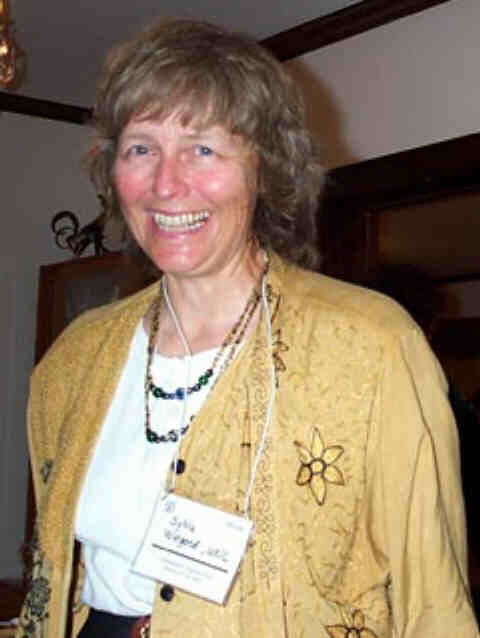 Births
which occurred on a March 08: Births
which occurred on a March 08: 1969 The Pontiac Firebird Trans Am is introduced. 1962 La camisa, de Lauro Olmo, es estrenado en el teatro Goya, de Madrid. 1945 Anselm Kiefer, German painter, born in Donaueschingen. — LINKS 1945 Sylvia Young [15 March 2002 photo >]. in Cape Town, South Africa, fifth child of mathematician Laurence Young [14 Jul 1905 – 24 Dec 2000] and of Joan Elizabeth Mary Dunnett [-1995], who would soon move with their children to Madison, Wisconsin. Sylvia would get her Ph.D. in math in 1971. She would marry mathematician Roger A. Wiegand, and both would teach at the University of Nebraska in Lincoln, while running marathons as a hobby. 1942 Manuel Valdés, pintor y escultor español. |
1926 Josefina Rodríguez de Aldecoa, escritora española. 1924 Anthony Caro, escultor británico. — LINKS 1920 George Batchelor, mathematician. 1907 Konstantinos Karamanlis, político griego. 1897 Josep Pla i Casadevall, prosista y periodista catalán. 1892 Juana de Ibarbourou, poetisa uruguaya. 1886 Edward Calvin Kendall, US Nobel Prize-winning chemist who died on 04 May 1972. 1879 Otto Hahn, German chemist, co-discoverer of nuclear fission, who won the Nobel Prize for Chemistry. He died on 28 July 1968. 1865 Natalio Rivas Santiago, político e historiador español. 1865 Vessiot, mathematician. 1862 Merrimack Confederate ironclad is launched. 1859 Hans Zatzka “P. Ronsard”, Austrian painter who died in 1945. — A Classical Idyll — A Moment of Contemplation — A Water Idyll — The Harem Dancer — The Rose Bower — Paradise 1859 Manuel García Prieto, político español. 1858 Ruggiero Leoncavallo, Neapolitan opera composer famous for Pagliacci, which, by its sensational story from everyday life reacts against the quasi-historical plots of Romantic Italian opera and of Wagner. Leorcavallo died on 09 August 1919. 1856 William B. Booth, US “general” of the Salvation Army (1912-29) who died on 16 June 1929. 1851 George Chrystal, mathematician. He died in 1911. 1843 Ernest-Ange Duez, French painter who died in 1896. — LINKS — Honeymoon (1873)
1788 William Hamilton, mathematician. 1781 Juana Azurduy de Padilla, heroína de la independencia boliviana. Alcanzó el grado de coronel. Murió en 1862. 1748 Dirk Thierry Langendyk, Dutch artist who died on 15 December 1805. 1714 Carl Philipp Emanuel Bach, composer, son of J.S. Bach, who died on 14 December 1788. 1495 Giovanni Battista Rosso di Jacopo Fiorentino, Italian painter and decorator who died on 14 November 1540. — MORE ON ROSSO AT ART “4” MARCH — LINKS — Assumption of the Virgin — Madonna and Child with Putti — Madonna Enthroned with Four Saints — Madonna Enthroned between Two Saints — Madonna Enthroned and Ten Saints — Marriage of the Virgin _ detail 1 . _ detail 2 — Musician Angel — Descent from the Cross _ detail 1 . _ detail 2 . _ detail 3 — Deposition from the Cross — Pietà — Dead Christ with Angels — Risen Christ — Moses Defending the Daughters of Jethro — Young Man |
|||||||